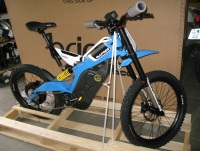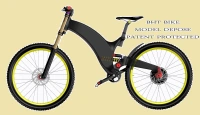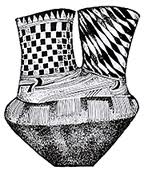Archives
iBikes.ro

iBikes design

-
Articole recente
- To be continued on New Blog
- Poor Travel
- DRZ SuperMoto 19.08.23
- ADV 390/DRZ/Himalayan GO
- Prin ogradă – Clujul de aur într-un we domol de august
- Imo Șardu / Mera / Topa Mica
- Hary Berry
- Imo 8/23
- Delean – Șard
- Acul în carul de fân – Pădureni / Sic
- Imo 7/23
- Din nou la doftoriceală și beserică, pe muzica de jazz
- Via Gheo. Baie de padure & glod în Toscana de Transilvania. Mn Strâmba – Mn Bălan – Chechiș spre Grădina Zmeilor
- Mn Strâmba – Mn Balan – Porolissum
- Via Gheo – Cristorel, Voivodeni, Strâmba
- Via Gheo – Cristorel, Voivodeni, Strâmba, Bălan, Porolissum
- Via Gheo – Cristorel, Topa Mica, Dolu, Ugrutiu
- Berindu
- Valea Iadului
- Via Mariae
- Renașterea isichastă vs oamenii care nu mai au nimic sfânt
- Radu Paltineanu
Categories
- ***** (43)
- 2014 (11)
- 2016 (2)
- 2017 (3)
- 2018 (5)
- 2019 (1)
- 2020 (3)
- 2021 (28)
- 2022 (19)
- 2023 (40)
- a3f (89)
- Alburnus Maior (1)
- Ce e de facut? (36)
- Distributism (15)
- GreenTech (2)
- Nationalism (8)
- Green (4)
- Green Party (26)
- GreenFuture (7)
- Podemos? (6)
- Rosia Montana (5)
- Septembrie 2013 (6)
- USR (1)
- AIS (35)
- aisbikes (9)
- antibanking (2)
- Auszeit (45)
- Bike Travel (9)
- Bikes (8)
- Music (3)
- Photography (3)
- Reader (5)
- Software (4)
- Tech (4)
- Balkans (1)
- Carpati (1)
- coop (5)
- esp (8)
- ethnogenesis (69)
- Archeology of symbols (11)
- Aryans (19)
- DNA (4)
- Etnogeneza Rumânilor (22)
- geohistory (1)
- Getae,Getes,Geti (11)
- Limba romînă (3)
- Linguistic Archeology (14)
- Old Europe Art (5)
- PIE (8)
- Forests (5)
- Forţa Ideilor (81)
- Attila Nagy (7)
- Brainstorming (6)
- Filosofie, antropologie (3)
- Gabriel Gheorghe (1)
- Nicu Parlog (2)
- Ovidiu Hurduzeu (10)
- People (18)
- Quotes (4)
- GeoHistory (1)
- Globalism Neoliberal (127)
- Big Business (11)
- Bildenberg (22)
- Communism (3)
- Consumism decadent (9)
- CyberWar (10)
- Mafia (20)
- Manipulari, diversiuni (8)
- Revolucion (49)
- Go (42)
- adv (2)
- Gradina Zmeilor (2)
- Green Tech (29)
- Case Naturale (3)
- Green Energy (8)
- Panouri Fotovoltaice (7)
- Sisteme solare portabile (2)
- Zero Point Energy (11)
- History (213)
- Dacia (53)
- Genetic Anthropology (18)
- Linguistics (15)
- Old Europe (49)
- PaleoGrafie (2)
- ProtoCrestinism (6)
- Romania (70)
- Basarabia (1)
- Transylvania (57)
- Cluj (1)
- Vlachs (6)
- ibikes.ro (2)
- imo (4)
- imo.imreh.ro (4)
- Imreh (2)
- NWO (1)
- offgrid (1)
- Spirit (33)
- Credintele Batranilor (5)
- Misticism (1)
- Ortodoxie (18)
- Sănătate (33)
- Bio (18)
- Codex Alimentarius (6)
- Hunza (7)
- Otravuri (14)
- Trascau (3)
- Uncategorized (32)
- Via Gheo (7)
Category Archives: ethnogenesis
Dacia ariana, leaganul limbii evanghelice – Petre Morar
Posted in 2023, Aryans, Dacia, ethnogenesis, Linguistics, Old Europe, Ortodoxie
Tagged Attic Greek, Biblical Greek, Dacia Ariana, Ionic Greek, Koine, Limba romana, Petre Morar
Leave a comment
Zidul Zmeilor – Zmiyevi Valy – Dragon Walls
After the settlement of the different Indo-European tribes, part of them, i.e. the Indo-Iranian tribes, remained in the steppes of southern Ukraine and Crimea. Indo-Iranians, or Cimmerians, who lived in the territory of Ukraine became the first people in Eastern Europe to … Continue reading
Posted in 2022, ethnogenesis, Getae,Getes,Geti, PIE
Tagged Cimmerians, Dacians, Dragon Walls, Scythians, Thracians, Zidul Zmeilor, Zmiyevi Valy
Leave a comment
JUS VALAHICUM
Extrase din articolul dulciu.wordpress.com/jus-valahicum : Prin conceptul JUS VALAHICUM înţelegem sistemul de drept român prestatal, respectiv întregul sistem de cutume, datini şi tradiţii juridice, cu riturile juridice corespunzătoare, păstrate şi transmise din generaţie în generaţie, din timpuri imemoriale.(1) Pe teritoriul … Continue reading
Posted in 2022, Etnogeneza Rumânilor, Vlachs
Tagged CIUGA, JUS VALAHICUM, legea pământului, LEGEA STRĂBUNĂ, Legea Ţării, sfatul batranilor
1 Comment
Mitropolia Ungrovalahiei
Nikola German Creștinizmu a trecut prin măi multe fază. Primul, pănă-n veacul 4, prelungit pănă cînd a fost omărîte Albijancile dîn Franca, șă bogumilcile dîn Balcan. După ce să întroduce incviziția. La noi în sat sa păstrat bogumilzmu. Isus a … Continue reading
Posted in 2021, Archeology of symbols, ethnogenesis, History, ProtoCrestinism, Vlachs
Tagged bogomil, Bosnia, katun
1 Comment
Rumâna – Rrămân – Old Lingua Franca
Ion Ionescu Asta (”bessi”) este in limba romană vorbita de țiganii băieși din Ungaria. wiki/Substrate_in_Romanian, wiki/Vulgar_Latin, wiki/Common_Romanian, wiki/Eastern_Romance_languages, wiki/Dalmatian_language, wiki/Aromanian_language – rrămân, wiki/Old_Occitan – aleximreh.wordpress.com/franta-a-fost-romanofona Common Romanian (româna comună), also known as Ancient Romanian (străromâna), Balkan Latin or Proto-Romanian, is a hypothetical and unattested Romance … Continue reading
Vlasinii – Ius Valahicum
Vlăsini sunt oameni răsprnjîțî prin munțî, care nu aparțin nici lu unul stat, rege, ban. Oameni liberi, care au responsabilitate spră stămoșî șî copii a luor, moștinitori. Vlăsini nu sunt organizațî în nici un feal (de state, traiesc dupa Ius Valahicum). Trăiesc în catune, or sate disperzate. Aic, colo o casă. Nau pre-a mare legătură întră iei. Să adună numa o dată pră an la trguri, pănăgiur. Nu sunt creștini, au mitologia proprie vlăsinească. Dar dă iei nimen na scris, că nu a fost interesanțî pentru rege, sultani. Sunt organizațî după lega pomîntului, or Ius Valahicum. Chiniezul e un feal dă moderator, care „să chinue să trăiască oameni în pace”, să nu fie ciartă întră oameni. Dă aia i-a spus „chiniez” / care să chinue. Continue reading
Posted in 2021, ethnogenesis, Etnogeneza Rumânilor
Tagged silve, Valakia, vlahia, vlakia, vlasia, vlasini
Leave a comment
St/Sveti Vlaho – Vlachs in the history of Croatia – the dalmatian / Ragusan language
As the Dalmatian language was threatened by the Slav expansion the Ragusan Senate decided that all debates had to be held in the lingua veteri ragusea, in ancient Ragusan language and the use of the Slav was forbidden. Nevertheless, during the 16th century, the Ragusan Romance language fell out of use and became extinct. Continue reading
Posted in ethnogenesis, Linguistic Archeology, Uncategorized
Tagged Dalmatian, language, Ragusa, St Vlaho, Sveti Vlaho, Vlachs
2 Comments
IYI, Oghurs, Kayi, Dulo, R1A, aryan elites
aleximreh.wordpress.com/2014/07/24/scrierea-milenara-a-vechii-europe-si-simboluri-precrestine: crucea imbarligata, crucea incercuita, crucea cu 7 spire si IYI R1 populations spread genes for light skin, blond hair and red hair. There is now strong evidence that both R1a and R1b tribes during the Bronze Age contributed to the diffusion … Continue reading
Posted in Archeology of symbols, Aryans, DNA, ethnogenesis
Tagged aryan elites, Dulo, IYI, Kayi, Oghurs, R1a
Leave a comment
Undeva pe aici zace ”patriotismul meu cultural” ..
In the NE of present day Romania – Great Moldavia, I2 farm culture mixed with R1AB. The result was a population having all the best technologies at that time – wheels, chariots, horses, pottery and farming technology, animal husbandry, metalworking. This melting pot was also a mix of genes and social aptitudes, including warfare. Competitive populations were able to grow than spread & “conquered” the world: the expansion of Yamna to the Balkans and Central Europe, the expansion of aryan people all Asia up to India & east of China. Sredny Stog people carried a mix of I2a2, R1, R1a and R1b lineages. Before the arrival of Neolithic farmers I2a2 dominated central Europe, Scandinavia and present UK. I2a1 even to present day is dominant in areas around Romania from Bosnia to Ukraina and it could indicate the longest cultural continuity of Europe – still alive today in traditional villages. I2a2b could have appeared soon after the Last Glacial Maximum, perhaps 17,000 years ago. Most of its branches would have become extinct and only one survived with a patriarch living during the Bronze Age, probably in Germany. The oldest known L38 sample comes from the Unetice culture in central-east Germany 4,000 years ago. This lineage spread from Germany to England via Belgium in the Late Iron Age with the Celtic people of the Hallstatt and La Tène cultures. Transylvania was the turning table from where ProtoCelts conquered Western Europe. Before that Romania was the center of Old Europe from where farming spread to Western Europe, Cris Culture started Liner Pottery Culture. The Cucuteni-Trypillian culture, the most advanced Neolithic culture in Europe before the Indo-European invasions in the Bronze Age was also an offshoot from the Starčevo–Kőrös–Criş culture. Cucuteni-Trypillian people mixed with Yamna neighbours than they spread as a minority lineage alongside haplogroups R1a and R1b to WEurope and Baltics with the Corded Ware expansion. Continue reading
Posted in 2020, DNA, ethnogenesis, Nationalism
Tagged Black Sea Flood, Cucuteni, I2, Old Europe, protocronism, Romania
Leave a comment
Țara / Cetatea Ciceului
”Toată culmea aceasta a Ciceului e plină de trecut, începând de pe terasă, unde este o aşezare fortificată din secolul al X-lea î.Hr. — una dintre cele mai mari, are 35 hectare. Apoi este nivelul de locuire începând cu mileniul … Continue reading
Posted in Etnogeneza Rumânilor, Getae,Getes,Geti, Romania, Transylvania, Uncategorized
Tagged bronz, Cetate, Ciceu, daci, Hallstatt, La Tene, neolitic
Leave a comment



